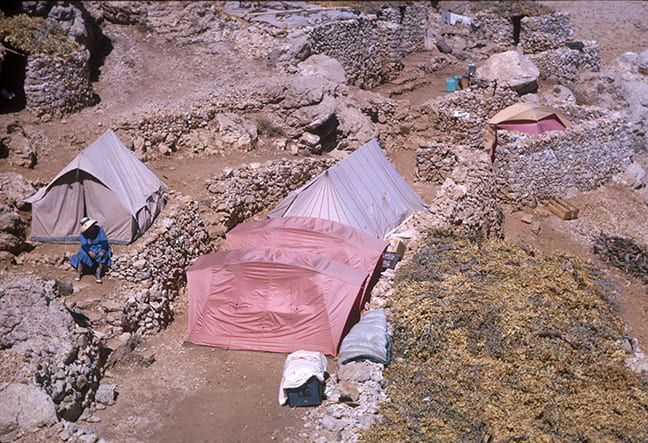Overcoming Adversity
[Nemrud Dagi] was in one of the most isolated and deserted regions, without railway, motor roads or convenient means of communication. It was hidden away and shut off.
—Theresa Goell
Against the Odds
Goell’s story seems like one written for a sweeping Hollywood epic, filled with adventure, heartache, and almost insurmountable challenges.
While at Radcliffe College, Goell began experiencing hearing loss, and was eventually diagnosed with otosclerosis, a genetic abnormality of the ear bone. Around the time of her diagnosis, she married and had a son, but soon divorced in the 1930s. As she pursued a career in academia, she was discouraged from continuing to the doctoral stage—her mentors feared that her hearing impairment and gender would limit her chances of securing an academic post. Despite the isolation she may have felt, she persisted, leading her excavations with grace and intelligence. She even learned to speak and lip read the local languages fluently in spite of her hearing impairment.

There is only one thing to do…and that is to just go on working.
Goell was a pioneering archaeologist and throughout her life she pushed past the gender barriers established for the women of her day, but not without strife. She succeeded in a profession dominated by men and earned their respect without formal academic credentials. She was also a Jewish woman who directed large numbers of Muslim men as well as an international team of professionals.
Harvard Museum of the Ancient Near East Archives, ©President and Fellows of Harvard College

Unrealized Dreams
Goell, pictured here, was unable to complete a full publication of her work due to a series of hardships both at the site and with her own declining health. She handed over her work to archaeologist Donald H. Sanders after suffering a stroke in 1983. She died in 1985, over a decade before the work was ultimately published.
Harvard Museum of the Ancient Near East Archives, ©President and Fellows of Harvard College
Difficult Environment, Local Impact
Travel to and living conditions at Nemrud Dagi were difficult, especially in the earlier years of Goell’s work. It was not unusual for her to spend months journeying to and from the site, often with thousands of pounds of equipment. Summer temperatures could soar to 130˚ Fahrenheit during the day, but turn to freezing at night. Water was a ninety-minute ride away which necessitated a mule train to travel back and forth all day to supply the crew. There were also no doctors on site and the nearest was a two-day ride away. Thus, Goell became the local resource for medical treatment and guidance, though she only had the basic first aid training she had gained during World War II. From the 1950s to 1970s, much of the equipment she brought included clothing and medicine for the local populations of Commagene.

Inhospitable Lands
The site of Nemrud Dagi is located in a very remote region, initially only approachable on foot or by horse in Goell’s day. Its remoteness likely saved it from looting, but the harsh climate of the area caused considerable damage to the ancient sculptures found there.
Harvard Museum of the Ancient Near East Archives, ©President and Fellows of Harvard College

Harsh Winds
There were often devastating windstorms that ultimately prompted Goell to build two-meter-high stone walls around each tent.
Harvard Museum of the Ancient Near East Archives, ©President and Fellows of Harvard College